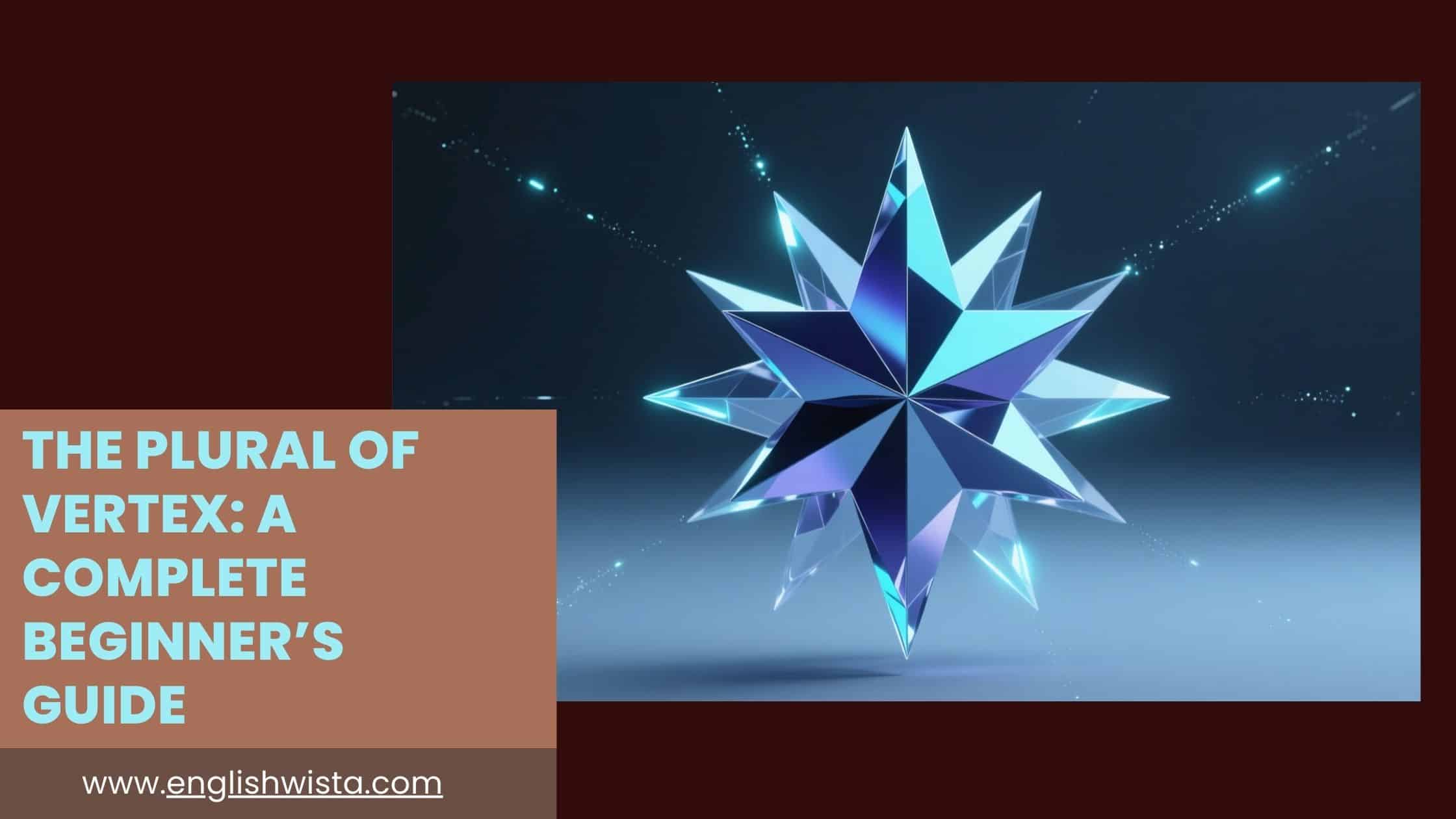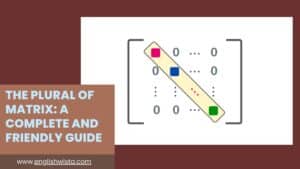Have you ever come across the word vertex and wondered what its plural form is? Maybe you saw it in a math textbook, a science article, or even while learning about 3D graphics in computers. At first glance, the word might look a little tricky. It doesn’t end in the usual “-s” or “-es” like most English words. Instead, it looks special because it is!
In this article, we’re going to dive deep into the plural of vertex. We’ll keep things simple, friendly, and step-by-step. By the end, you’ll not only know the plural form but also how to use it correctly in sentences. We’ll also explore where the word comes from, why it’s different, and share lots of practical examples you can use in real life.
So, grab your curiosity and let’s take a closer look!
What is a Vertex?
Before we talk about the plural, let’s make sure we understand what the word vertex means.
A vertex is:
- In geometry: The point where two or more lines, edges, or rays meet.
- In everyday use: It can also mean the top, tip, or highest point of something.
Think of it like this:
- The corners of a triangle are vertices.
- The tip of a mountain can be called a vertex.
- The corners of a cube are also vertices.
So, a vertex is simply a special kind of “point.”
What is the Plural of Vertex?
Here’s the short and simple answer:
The plural of vertex is vertices.
Yes, instead of adding an s or es like most English words, it changes in a different way. This is because vertex comes from Latin, and in Latin, many words ending in “-ex” or “-ix” change to “-ices” when they become plural.
So:
- One vertex → Two or more vertices
Why Not “Vertexes”?
This is a question many learners ask. Technically, “vertexes” could make sense in English because our usual rule is to add -es to words ending in “x.” For example:
- Box → Boxes
- Fox → Foxes
So why not “vertexes”?
The answer is that English borrowed the word vertex directly from Latin. Since it’s often used in technical fields like math, geometry, and science, people kept the Latin-style plural vertices. Over time, this became the standard accepted form.
That means while you might see “vertexes” used once in a while, it’s very rare and not the preferred form. If you want to sound correct and confident, always use vertices.
How Do You Pronounce Vertices?
This is another important detail!
- Vertex is pronounced: VUR-teks
- Vertices is pronounced: VUR-ti-seez
Notice how the ending changes: -tex becomes -tees.
Where Do We Use the Word Vertex?
You’ll mostly come across this word in:
- Geometry: Talking about shapes like triangles, polygons, or polyhedrons.
- Graph theory: In math and computer science, where “vertex” refers to a point in a network.
- Everyday language: Referring to the highest or most important point of something.
Example Sentences Using Vertex and Vertices
Let’s look at some simple, clear examples.
With “vertex” (singular):
- A triangle has three sides and three vertices, but we call each corner a vertex.
- The top of the mountain is its vertex.
- In computer graphics, each vertex helps form part of a 3D model.
With “vertices” (plural):
- A cube has eight vertices.
- The polygon’s vertices are connected by straight lines.
- The scientists studied the positions of the vertices in the structure.
Notice how “vertices” makes sense when we’re talking about more than one corner or point.
Is Vertex Singular or Plural?
This is a common confusion. The word vertex is always singular. Its plural is vertices.
- One corner → a vertex
- Two or more corners → vertices
So if you ever feel unsure, just remember: x = one, ices = many.
The Origin of the Word Vertex
Words can be more fun when we know their history!
The word vertex comes from the Latin word vertere, which means “to turn.” In Latin, vertex originally meant “the top” or “the highest point.” That makes sense because in geometry, a vertex is often the “corner” or “point” where things meet.
Since English borrowed the word from Latin, it also kept the Latin-style plural form: vertices.
How Does Vertex Compare to Similar Words?
Some words behave in a similar way:
- Index → Indices
- Matrix → Matrices
- Appendix → Appendices
All of these come from Latin and follow the same pattern. So once you learn one, the others feel easier.
Fun Facts About the Word Vertex
Here are some extra little nuggets you might enjoy:
- In astrology, the vertex is a special point in the sky that astrologers sometimes use in charts.
- In anatomy, the vertex refers to the very top of the head.
- In physics, vertices can describe points where particles interact in diagrams.
- In 3D modeling, every shape you see on a computer screen is made up of polygons, and every polygon is made up of vertices. Without vertices, video games and animations wouldn’t exist!
Common Mistakes to Avoid
Here are a few mistakes learners often make:
- ❌ Saying “vertexes” (not standard)
- ❌ Thinking “vertices” is singular
- ❌ Forgetting the pronunciation “vur-ti-seez”
The correct usage is always:
- Vertex (singular)
- Vertices (plural)
Quick Memory Trick
Want an easy way to remember?
Think of “vertex” as a point. When you add more points, the word “vertices” sounds like “many little tees.” Since vertices are many little corners, the sound matches the idea.
Real-Life Scenarios Where You Might Use It
- In school: “This triangle has three vertices.”
- In computer graphics: “The model has thousands of vertices for smooth detail.”
- In climbing: “The hikers reached the vertex of the hill.”
- In storytelling: “The story reached its vertex, the highest moment of tension.”
By practicing with real-life sentences, you’ll get comfortable with when to use vertex versus vertices.
Why Is This Important to Learn?
You might wonder: why spend time learning such a small detail? Here’s why:
- It helps you sound accurate in math, science, or professional settings.
- It avoids confusion when reading textbooks or technical articles.
- It gives you confidence in using English precisely.
Small details like this build up over time and make your English much stronger.
Conclusion
Let’s wrap this up in a simple way.
- Vertex means a point, corner, or tip.
- The plural of vertex is vertices.
- Don’t use “vertexes” it’s not standard.
- Pronounce it as vur-ti-seez when plural.
- You’ll see it in math, science, computer graphics, and even in everyday language.
So, the next time you see a triangle, a cube, or even a 3D video game, you’ll know exactly what to call those little corners. They aren’t just points they’re vertices.
Now you can confidently explain it to a friend, a classmate, or even use it in your own writing. And that’s the real power of learning: turning tricky words into simple, clear knowledge.



